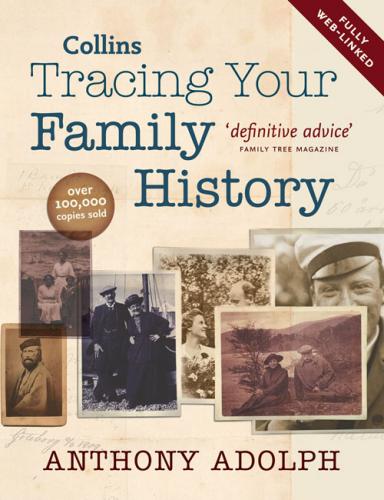Occupation.
Whether the person was born in the same county. Usually ‘Y’ for yes and ‘N’ for no, or ‘NK’ for not known. If the birth was outside England and Wales, the abbreviations were ‘S’ for Scotland, ‘I’ for Ireland or ‘F’ for ‘foreign parts’ – the rest of the world! Relationships were not stated, and should not be assumed: two 50-year-olds of opposite sex and a 20-year-old could be husband, wife and child, or otherwise brother, sister and a child of one of their cousins – or one of many other possible permutations.
A page from an 1841 return.
POPULATION FIGURES
THE POPULATION of England was (roughly) 18 million in 1850;
6 million in 1750;
5.5 million in 1700;
4 million in 1600;
2 million in 1500;
4 million in 1300 (i.e. before the Black Death), and
2 million in 1200.
You have two parents, four grandparents, eight great-grandparents, 16 great-great-grandparents, and so on. Most of your ancestors, therefore, were reasonably close cousins. If someone alive in Roman England left descendants who are alive today, and you have any English ancestry, you are probably descended from them.
1851–1901 CENSUSES
These are broadly similar in their detail and survive almost complete. They give:
Address. As 1841. In 1891 and 1901, the number of rooms occupied, if less than five, was recorded. Double dashes indicate the break between buildings; single dashes indicate the break between different households in the same building.
Name of each person in the household. Initials of middle names could be and often were recorded.
Relationship to the head of household. Usually wife, son or daughter, but also step-child, in-laws, servants and, if you are very lucky, parents or grandparents. Sometimes the terms ‘in-law’ and ‘step-’ were used differently to nowadays: a son-in-law today means the daughter’s husband, but then it was sometimes used for the wife’s son by a previous marriage, what we would now term a ‘step-son’, and vice versa.
Marital condition. Married, single or widowed.
Age. Ages were recorded precisely.
Occupation. In 1891 and 1901, the census notes whether the person was an employee or employer and, if the latter, how many people, if any, they employed. The acreage of farms was also noted.
If working at home. This was a new column added in 1901.
Place of birth. Recorded by parish and county. If the person was born outside England and Wales, usually only the country would be given, although sometimes you may be lucky and find the parish or nearby town stated too. If luck does not strike with the first census return you examine, try another.
Physical and mental condition. This was a column for those who were blind, deaf and dumb. Further categories, ‘imbecile or idiot; lunatic’ were added in 1871, subsequently changed to ‘lunatic, imbecile, feeble-minded’ in 1901.
1911, 1921 AND 1931 CENSUSES
You can pay £45 to search under a specific address by contacting www.nationalarchives.gov.uk/1911census. The Office of National Statistics plans to create an online service for the 1911 census by 2009. The 1921 census should be released in 2022, but the 1931 census was completely destroyed by fire in the Second World War.
WHERE TO SEARCH
CENSUS RETURNS
